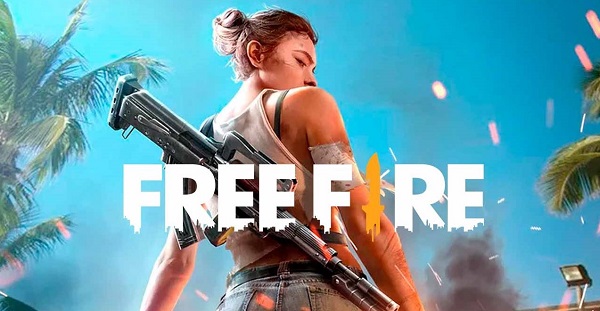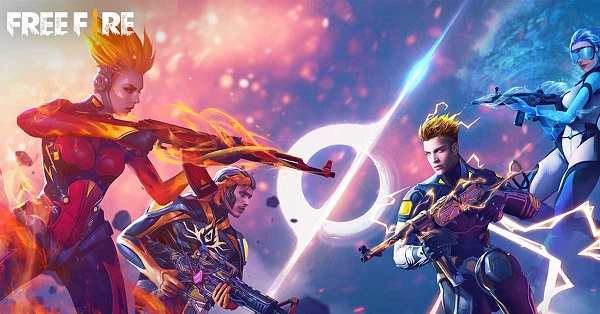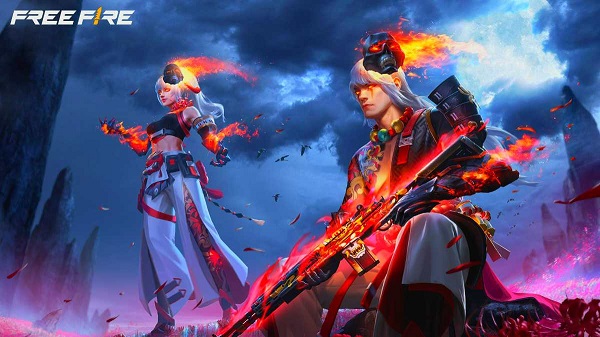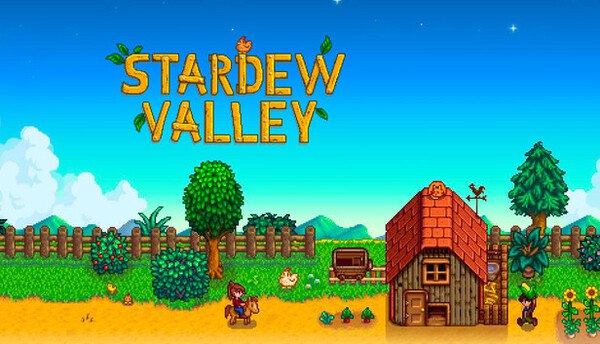Advertisement
The Impact of Weapon Balancing on Free Fire: A Detailed Analysis
September 4, 2024
Latest Articles
-

- News
-

- News
-

- News
-

- Tips&Guides
Popular
-
 99 Nights in the Forest
99 Nights in the Forest is a survival and exploration game where players spend 99 nights deep in the wilderness. Build shelters, forage for food, hunt wildlife, and adapt to the ever-changing forest environment. Face physical and mental challenges in a realistic, immersive adventure that tests your resilience and connection to nature. Are you ready to survive and conquer the wild?
Read full review
99 Nights in the Forest
99 Nights in the Forest is a survival and exploration game where players spend 99 nights deep in the wilderness. Build shelters, forage for food, hunt wildlife, and adapt to the ever-changing forest environment. Face physical and mental challenges in a realistic, immersive adventure that tests your resilience and connection to nature. Are you ready to survive and conquer the wild?
Read full review
-
 Roblox:Blue Lock Rivals
Roblox: Blue Lock Rivals is an anime-inspired soccer game on Roblox, based on the popular Blue Lock series. The game challenges players to compete in high-paced soccer matches, focusing on individual skill, precision, and strategy. Players can customize their characters, unlock unique abilities, and rise through competitive ranks while enjoying visually stunning anime-style graphics. With regular updates, community-driven events, and engaging multiplayer modes, Blue Lock Rivals offers both casual players and competitive gamers an exciting sports experience filled with rivalry and teamwork.
Read full review
Roblox:Blue Lock Rivals
Roblox: Blue Lock Rivals is an anime-inspired soccer game on Roblox, based on the popular Blue Lock series. The game challenges players to compete in high-paced soccer matches, focusing on individual skill, precision, and strategy. Players can customize their characters, unlock unique abilities, and rise through competitive ranks while enjoying visually stunning anime-style graphics. With regular updates, community-driven events, and engaging multiplayer modes, Blue Lock Rivals offers both casual players and competitive gamers an exciting sports experience filled with rivalry and teamwork.
Read full review
-
 Roblox: Grow a Garden
Grow a Garden is a colorful farming simulation game where players plant crops, harvest rare fruits, and design personalized garden spaces. With relaxing gameplay, daily quests, and social interaction features, it offers a rewarding experience for those who enjoy creativity and community. Whether solo or with friends, Grow a Garden is a wholesome, engaging game for players of all ages.
Read full review
Roblox: Grow a Garden
Grow a Garden is a colorful farming simulation game where players plant crops, harvest rare fruits, and design personalized garden spaces. With relaxing gameplay, daily quests, and social interaction features, it offers a rewarding experience for those who enjoy creativity and community. Whether solo or with friends, Grow a Garden is a wholesome, engaging game for players of all ages.
Read full review
-
 Dune: Awakening
Survive, conquer, and evolve in a massive sci-fi universe where every action shapes your fate. From harvesting precious spice to battling hostile factions, your journey across the dunes is one of risk, resilience, and ruthless survival. Are you prepared to rise from the sand and leave your mark on the world?
Read full review
Dune: Awakening
Survive, conquer, and evolve in a massive sci-fi universe where every action shapes your fate. From harvesting precious spice to battling hostile factions, your journey across the dunes is one of risk, resilience, and ruthless survival. Are you prepared to rise from the sand and leave your mark on the world?
Read full review
-
 Destiny 2
Destiny 2 is a free-to-play, action MMO set in a mythic science fiction universe. Developed by Bungie, the game blends fast-paced first-person shooter combat with deep RPG elements, epic story-driven campaigns, intense multiplayer modes, and challenging co-op raids. Players take on the role of Guardians, wielding powerful abilities and weapons to protect humanity from alien threats and uncover the mysteries of the solar system. With constant updates, seasonal content, and new expansions, Destiny 2 offers an ever-evolving world of adventure.
Read full review
Destiny 2
Destiny 2 is a free-to-play, action MMO set in a mythic science fiction universe. Developed by Bungie, the game blends fast-paced first-person shooter combat with deep RPG elements, epic story-driven campaigns, intense multiplayer modes, and challenging co-op raids. Players take on the role of Guardians, wielding powerful abilities and weapons to protect humanity from alien threats and uncover the mysteries of the solar system. With constant updates, seasonal content, and new expansions, Destiny 2 offers an ever-evolving world of adventure.
Read full review
-
 Smite 2
Smite 2 is the next-generation sequel to the iconic third-person MOBA, built using Unreal Engine 5. Featuring breathtaking visuals, reimagined god abilities, and enhanced combat mechanics, Smite 2 delivers a fresh and immersive experience while staying true to its mythological roots. With intense 5v5 battles, new maps, and improved gameplay fluidity, it invites both new players and veterans to dominate the battlefield like never before.
Read full review
Smite 2
Smite 2 is the next-generation sequel to the iconic third-person MOBA, built using Unreal Engine 5. Featuring breathtaking visuals, reimagined god abilities, and enhanced combat mechanics, Smite 2 delivers a fresh and immersive experience while staying true to its mythological roots. With intense 5v5 battles, new maps, and improved gameplay fluidity, it invites both new players and veterans to dominate the battlefield like never before.
Read full review










 The Evolution of Weapon Balancing
Weapon balancing in Free Fire has undergone significant changes since the game's launch. Initially, certain weapons were dominant due to their superior stats or unique features. Early in the game’s history, players noticed a few weapons consistently outperforming others, leading to complaints and a push for adjustments.
Significant Balancing Updates
Garena has made several major updates aimed at addressing weapon balance issues:
The Evolution of Weapon Balancing
Weapon balancing in Free Fire has undergone significant changes since the game's launch. Initially, certain weapons were dominant due to their superior stats or unique features. Early in the game’s history, players noticed a few weapons consistently outperforming others, leading to complaints and a push for adjustments.
Significant Balancing Updates
Garena has made several major updates aimed at addressing weapon balance issues:
 On the flip side, some weapons are considered underpowered, meaning they rarely see use compared to their counterparts. Examples include certain SMGs and shotguns that struggle to compete with more versatile or powerful rifles. This disparity leads to a lack of diversity in weapon choice and can frustrate players who prefer using these underutilized weapons.
Impact on Gameplay and Player Experience
Competitive Fairness
Weapon imbalances directly affect competitive fairness in Free Fire. Players who use overpowered weapons often have a significant advantage, which can skew match outcomes and lead to dissatisfaction among those who use less effective weapons. This imbalance can create a less enjoyable experience for players who prefer a more skill-based competition.
Meta Evolution
The game's meta, or the most effective tactics available, is heavily influenced by weapon balancing. When certain weapons are overpowered, the meta shifts to favor those weapons, reducing the diversity of tactics and strategies that players can employ. This narrow focus can make gameplay monotonous and limit the strategic depth of the game.
Player Behavior and Preferences
Weapon Preference Shifts
Players often gravitate towards weapons that offer the best performance, which can lead to a homogenous experience where only a few weapons dominate. This preference shift impacts how players approach matches and can reduce the overall variety of gameplay experiences.
Economic Implications
On the flip side, some weapons are considered underpowered, meaning they rarely see use compared to their counterparts. Examples include certain SMGs and shotguns that struggle to compete with more versatile or powerful rifles. This disparity leads to a lack of diversity in weapon choice and can frustrate players who prefer using these underutilized weapons.
Impact on Gameplay and Player Experience
Competitive Fairness
Weapon imbalances directly affect competitive fairness in Free Fire. Players who use overpowered weapons often have a significant advantage, which can skew match outcomes and lead to dissatisfaction among those who use less effective weapons. This imbalance can create a less enjoyable experience for players who prefer a more skill-based competition.
Meta Evolution
The game's meta, or the most effective tactics available, is heavily influenced by weapon balancing. When certain weapons are overpowered, the meta shifts to favor those weapons, reducing the diversity of tactics and strategies that players can employ. This narrow focus can make gameplay monotonous and limit the strategic depth of the game.
Player Behavior and Preferences
Weapon Preference Shifts
Players often gravitate towards weapons that offer the best performance, which can lead to a homogenous experience where only a few weapons dominate. This preference shift impacts how players approach matches and can reduce the overall variety of gameplay experiences.
Economic Implications
 Weapon balancing also has economic implications. Players may feel pressured to spend money on in-game purchases to obtain or upgrade the most powerful weapons. This financial incentive can influence player behavior and perceptions of fairness within the game.
Recent Balancing Efforts and Updates
Developer Responses
Garena has been actively working to address weapon balancing issues through various updates and community feedback. Recent efforts include:
Weapon balancing also has economic implications. Players may feel pressured to spend money on in-game purchases to obtain or upgrade the most powerful weapons. This financial incentive can influence player behavior and perceptions of fairness within the game.
Recent Balancing Efforts and Updates
Developer Responses
Garena has been actively working to address weapon balancing issues through various updates and community feedback. Recent efforts include:
 Implementing regular and transparent updates is essential for maintaining weapon balance. Players should be informed about changes and the reasons behind them to foster trust and understanding. Transparency in balancing decisions can also encourage more constructive feedback from the community.
In-Depth Data Analysis
Utilizing in-depth data analysis can help identify and address balancing issues more effectively. By examining weapon usage statistics, performance metrics, and player feedback, developers can make informed decisions about necessary adjustments.
Community Involvement
Engaging with the Free Fire community is vital for understanding player perspectives and preferences. Developer surveys, beta testing, and forums can provide valuable insights into balancing needs and help ensure that updates align with player expectations.
Future Directions for Free Fire Balancing
Emerging Trends and Technologies
As Free Fire continues to evolve, emerging trends and technologies may influence weapon balancing. For example, advancements in game analytics and machine learning could provide more precise data for balancing decisions. Staying ahead of these trends can help ensure that balancing efforts remain effective and relevant.
Long-Term Balancing Strategies
Implementing regular and transparent updates is essential for maintaining weapon balance. Players should be informed about changes and the reasons behind them to foster trust and understanding. Transparency in balancing decisions can also encourage more constructive feedback from the community.
In-Depth Data Analysis
Utilizing in-depth data analysis can help identify and address balancing issues more effectively. By examining weapon usage statistics, performance metrics, and player feedback, developers can make informed decisions about necessary adjustments.
Community Involvement
Engaging with the Free Fire community is vital for understanding player perspectives and preferences. Developer surveys, beta testing, and forums can provide valuable insights into balancing needs and help ensure that updates align with player expectations.
Future Directions for Free Fire Balancing
Emerging Trends and Technologies
As Free Fire continues to evolve, emerging trends and technologies may influence weapon balancing. For example, advancements in game analytics and machine learning could provide more precise data for balancing decisions. Staying ahead of these trends can help ensure that balancing efforts remain effective and relevant.
Long-Term Balancing Strategies
 Developing long-term balancing strategies involves creating a dynamic system that can adapt to changes in gameplay and player behavior. This approach should include regular updates, community feedback, and continuous evaluation of weapon performance to maintain a fair and
Developing long-term balancing strategies involves creating a dynamic system that can adapt to changes in gameplay and player behavior. This approach should include regular updates, community feedback, and continuous evaluation of weapon performance to maintain a fair and








